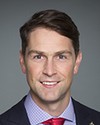Yes. Actually, the suicide crisis in our area began in 1986. If you look at the statistics before that, there were suicides, but there was no pattern to them. In 1986 a pattern started to develop, beginning with young men between the ages of 15 and 21. It peaked in 2000, when we had 26 suicides in the region in one year. That's more than two suicides a month. In small communities, that has had a devastating effect.
There's no one reason why these suicides happen; there are many reasons. You have to take the environment that these kids live in together with the things that have happened to them personally to come up with some semblance of why they died. None of them can tell us: they're dead. We can only look at their backgrounds and realize that everything a reserve life represents has conspired to kill these young people. I don't know if any of you have ever lived in reservations. It's a very poor way of life. Many of these kids grow up hungry all the time. They have poor clothing. They experience a lot of family violence from the time they are little babies. Some of them just get tired. They just walk off and hang themselves. Kids do that. There's nothing; the systems that are in place are not enough to look after all these kids adequately. Some of them just give up. They can't go on.
What are we doing about it? There is no policy and therefore no mental health program for first nations people in Canada. That's the number one problem. When I went to Ottawa back in the late eighties, when I was told we had a crisis, I was told that the federal government doesn't have a policy for mental health; the province does that. I went to the province, and they said, “Yes, we have a whole series of mental health programs—except for status Indians living on reserve.” So we were nowhere.
There is still no policy for these kids who live on reserve to get mental health help. All we have is a patchwork of mental health programs from both the federal level and the province. There is no comprehensive program to deal with these suicides. That's the first thing. We have to take whatever we can, from wherever we can, to deal with this issue. There are many issues. We have had pedophiles in our region, we have poverty—you name it. These kids just can't deal with it without—



